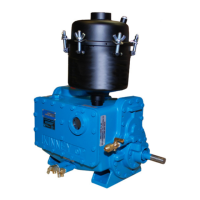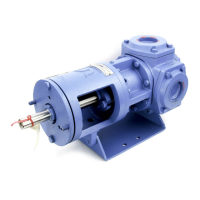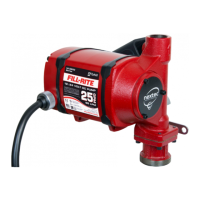Page 17 of 18
Troubleshooting
No uid is delivered
• Power is not on
• Net positive suction head available (NPSHA) is
lower than required for the inlet conditions and
the vapor pressure of the liquid pumped. Calculate
NPSHA and redesign piping if necessary
• Leaks in suction line or port passages
• These can be detected by submerging the pressure
line from the discharge side of the pump into a pail
of liquid where the air will be seen in the form of
bubbles
• Direction of shaft rotation is incorrect
• Pump shaft is not rotating. The coupling is defective
or the tongue and groove are not engaged
• The relief valve setting is too low. Liquid is
discharging through the by-pass port
Capacity is too low
• There are leaks in the suction line
• The suction lift is too great, the suction line is too
small, or too long
• This can be detected by installing a vacuum gauge
directly at the pump suction
• The maximum vacuum at the pump suction should
never exceed 15” of mercury
• Vaporization caused by higher vacuums will
generally result in capacity drop-o
• Suction conditions must be redesigned
• Pump speed is too slow
• The strainer is too small or obstructed
• The suction port or pipe is not immersed deeply
enough in the liquid
• Piping is improperly installed, permitting an air
pocket to form in the pump
Pump works spasmodically
• Leaky suction line
• Varying suction conditions
• Air or vapor in the uid.
Excessive power draw
• Pressure too high
• Liquid is more viscous than originally expected
• Suction or discharge lines obstructed
• Insucient horsepower
• Drive shaft and pump misaligned
• Pump binding due to insucient end clearance
• Pump shaft is bent
• Misalignment within the pump due to bad piping
or poor installation, causing strain or distortion
Pump is noisy
• Pump is cavitating due to inadequate suction
conditions
• Misalignment of coupling
• Coupling is set too close to pump
• Vibration of pump due to worn or bent shaft
• Air leaks on suction side of pump or air entrainment
in the uid
Pump leaks
• Cover bolts need tightening or o-rings are defective
• Worn or defective seal.
